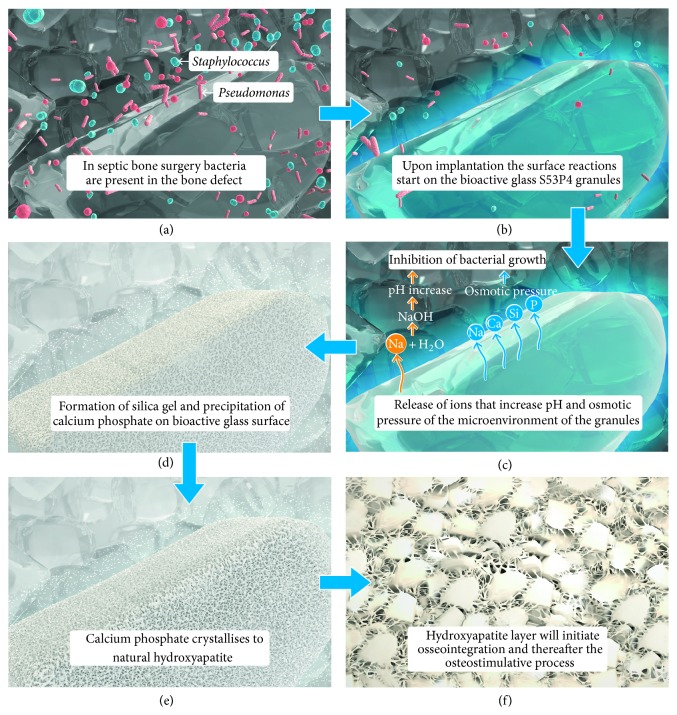Figure 1.
An illustration of the surface reactions of bioactive glass after implantation. When bioactive glass is implanted in a septic bone defect it will exchange alkali from the glass surface with the hydronium in the surrounding microenvironment, which will increase the local pH. The release of ions of the glass surface will also increase the osmotic pressure locally. A silica gel layer will be formed near the glass surface to which amorphous calcium phosphate precipitates and subsequently will crystallise into natural hydroxyapatite. The hydroxyapatite will induce the osteostimulative effect by activating osteogenic cells. This figure was kindly provided by BonAlive Biomaterials Ltd.

